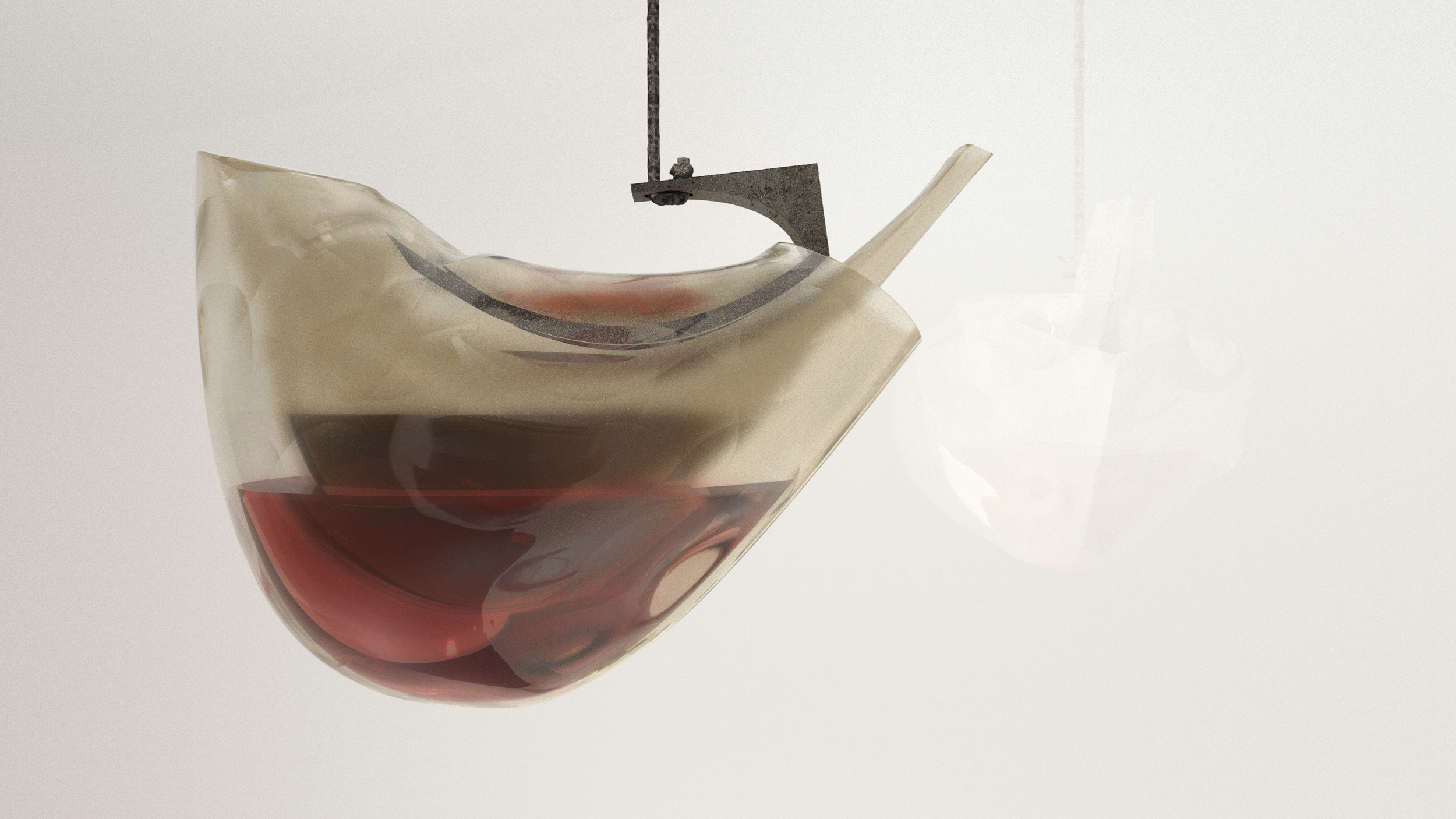
Per Guilia, A Vessel
This study began with imploding vessels, that intrude upon themselves and nest within themselves, often portraying continuous surfaces.
Is an intrusion a cantilever, a heroic feat of structure yet still held within a structure?
I began to ask how can I create space within space, air contained within air, or fluids segregated yet adjacent and held within a single body or vessel.
What material enables this continuity, malleability, and transparency to reveal that which is within.
The history of glass is vast, with fabrication including a range of combinations between air, fluid glass, and molds.
In addition to dipping molds in molten glass, there has been coiling of glass as viscous liquid around molds, casting glass in molds, and blowing glass against molds.
With such a complex nesting and form, can a glass be blown against a mold, sandwiched by a partner mold, and blown against again. Seams sealed by flame and torch.
Returning to the roman potion and perfume bottles, one begins to wonder what each held. A single fluid or concoction. Were they ever to be mixed, are there recipes and partners?
This introduces the realm of healing and ingestible fluids. Mixing to make medicines, potions, or even poisons.
Those within this realm, doctors and healers and apothecaries, were often inaccessible and expensive. In many places, women became the link between healing and the people. Of course, this has also led to accusations and labelling of woman as witch. But what does that really mean, and why must witch be wicked?
This brings me to Guilia Tofana. A roman, and professional Italian poisoner. Her work was a continuation of legacy and lived on beyond her death. Guilia's arsenic, lead, and belladonna merged to murder over 600 men in Italy.
This vessel was designed with several chambers to contain fluids, keeping them separated until the vessel is tipped and poured. Dislodged from its hook, its home, the vessel is cupped within open palms and poured forward, away from the heart, each liquid flowing from its cavity and guided by its respective spout. As they flow, they merge, innocent in isolation, but menacing once they meld, this vessel offers itself as a container of single purpose, for potions to be stored and contained apart, then deployed in a ceremonial or ritual pour.
MIT Options Studio taught By William O’Brien Jr.
Individual work
Spring 2022




